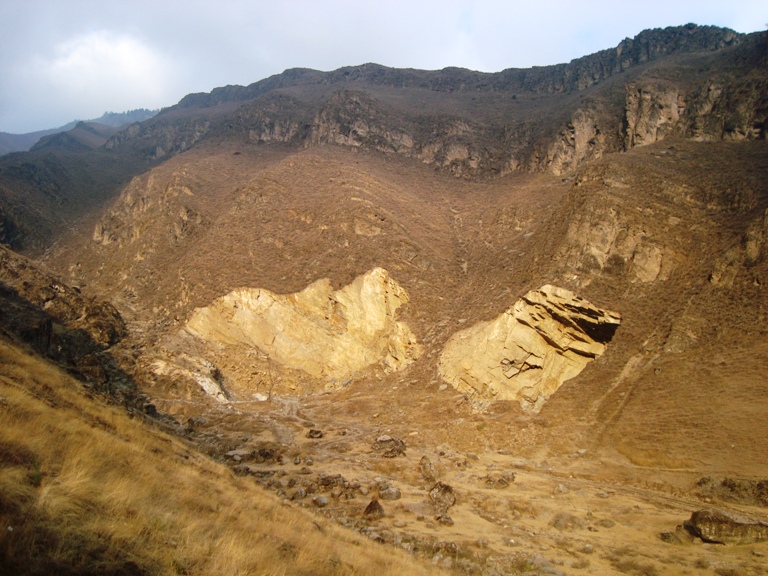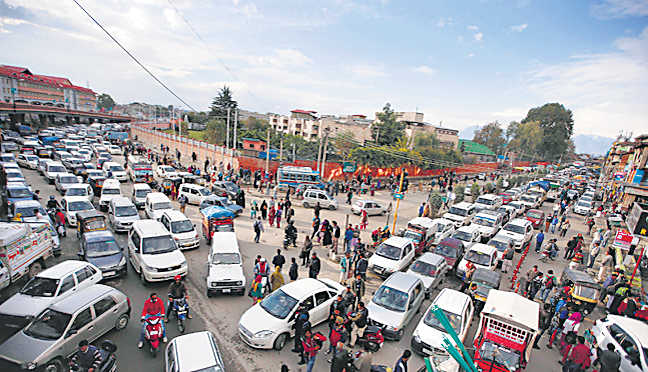Despite the passage of several years since its inception, the Fossil Park at Khanmoh on the outskirts of Srinagar is yet to materialise.
After China, this was supposed to be the first rich Triassic Park with decades-old formations.
USA’s The Penn Dixie-Natural History Society had agreed to the Kashmir-based Environment Policy Group (ECG) to develop the park further.
The massive bio-extinction, which was believed to have occurred 252 million years back in the geological times of Permian Triassic Era, is fully stored in a great rock system at Guryul Ravine in Khanmoh.
Some year’s back, the government had allocated Rs 1 crore to the Tourism Department for the park’s fencing and development.
Tenders were also floated to initiate the development of this first-ever fossil park in Khonmoh.
Faiz Ahmad Bakshi, the Convener of EPG told Greater Kashmir that the process was initially started to protect, develop, and preserve the fossil park, but it has faced interruptions.
“We are once again meeting with the government regarding the development of the fossil park,” he said.
Penn Dixie, renowned for being the world’s top Fossil Park located in Hamburg, New York, has agreed to provide assistance in establishing a fossil park in Kashmir. The Penn Dixie Board of Directors has recognised the ‘Kashmir Triassic Fossil Park’ as one of the world’s geological treasures.
Bakshi emphasised the historical significance of the Triassic formations in Khanmoh stating that they would soon be showcased in a park.
The EPG members, with Abdul Majid Bhat, made a presentation to the Penn Dixie Board and worked tirelessly towards this goal.
The presentation highlighted the geological treasure of the Fossil Park at Guryul Ravines, Khonmoh.
Bakshi said that the EPG had dedicated several years to this project, building upon decades of research conducted on the fossils since 1882.
Geologists from various countries including the UK, USA, Ireland, Japan, Scotland, and China had visited this area for research studies.
The rocks at Khanmoh preserves a diverse range of fossils, including plant fossils like Gangmopteris and Glossopteris leaves, as well as Foraminifera, Byzones, Brachiopodes, Conodonts, Bivalve, Ammonoids, Pelecypod, and Claria.
Notably, the layers of the rocks at Khanmoh also contain evidence of the first-ever recorded tsunami.
Once fully developed, the site is expected to significantly boost tourism and provide invaluable resources for students, scientists, and researchers worldwide.
Some additional information about the Khanmoh Fossil Park:
- The park was first proposed in 2009, and it was supposed to be completed by 2014.
- The park was to be located in the Khanmoh area of Srinagar, and it was to showcase a variety of fossils from the Triassic period.
- The park was to be a major tourist attraction, and it was expected to generate revenue for the local economy.
- However, the park has not yet been completed, and there is no indication when it will be.
The failure of the Khanmoh Fossil Park is a setback for the tourism industry in Kashmir. The park was supposed to be a major draw for tourists, and its absence is a loss for the local economy.
The failure of the Khanmoh Fossil Park is also a reminder of the challenges that face development in Kashmir. The region is plagued by violence and instability, and this has made it difficult to attract investment and to complete projects.
Despite the challenges, there is still hope for the Khanmoh Fossil Park. The government has said that it is committed to completing the project, and there is a growing interest in the park from the tourism industry. If the park is eventually completed, it could be a major asset for Kashmir.






